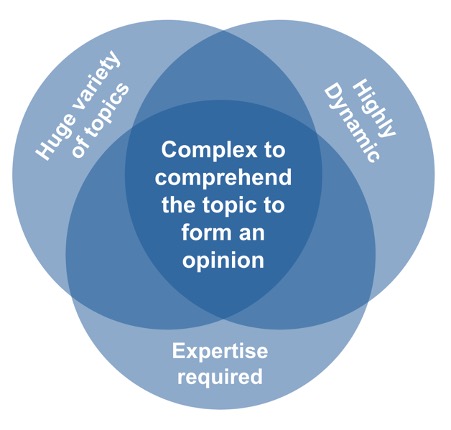Transhumanism is considered a philosophical school of thought that seeks to expand the boundaries of human possibilities through the use of technological methods.
Rena Seiler, MAS Digital Business student at HWZ University in Zurich, Switzerland, offers insight into the challenges of the transhumanist vision.
On February 18, 2021, Perseverance, NASA’s rover, landed safely on Mars. From tabloids to science magazines, the broad media covered the successful landing on the red planet, which marked the kickoff of NASA’s mission. Much of the population watched in fascination as humanity moved one step closer to one of the four explicit goals of NASA’s mission: the colonization of space, starting with Mars. So our aspiration to colonize space is no longer science fiction at all but reality.
Colonizing space: Is the human object as ready as its rockets?
The vision of space colonization also poses challenges for the “human object.” Currently, a one-way trip to Mars takes nine months. The associated strain on the human body leads to various, sometimes lasting, physical impairments. The question inevitably arises as to how a human being can become physically and psychologically fit for space travel and the colonization of new habitats. Can humans be optimized to sustain their health during long space trips and stays on other planets?
Transhumanism stands for self-optimization, colonization of space, and immortality.
Transhumanists specifically think about the optimization of humans. The explicit goals of the transhumanist vision are self-optimization, colonization of space, and immortality. The example of the recent Mars landing illustrates that a closer look at this vision has become relevant.
“This post is not a plea for or against transhumanism. The term describes an eccentric and extreme vision of a technologically evolved human being, but not how to get there. The interesting discussion, in my view, is the examination of that very path and the questions it raises. This post aims to bring attention to the questions that arise in finding the path, not to evaluate the vision per se. We are already moving on this path, as the example of the Rover landing illustrates.”
Next evolutionary stage: technologized immortal humankind?
The concrete, conscious aspiration of man to evolve further and beyond himself originates in the humanism of the 15th century. Humanism is often considered the origin of today’s transhumanist movement. For transhumanists, the application of technology into humans is the next logical evolutionary step. In this step, we see the opportunity for further development of humanity itself. The ultimate goal is the technologically enabled immortality of humankind.
The crucial question: should it be done, and what can be done?
The integration of technology into human beings has already been taking place as a matter of course for decades. In many cases, one does not question this integration. For example, when we speak of medical healing methods, we generally accept without questioning any technology applied to restore lost physical abilities (e.g., artificial heart valves, organs, or limbs). In the case of new methods, their justification is controversially discussed mainly in the beginning. Especially genetics, neurology, or embryology are considered sensitive topics.
“Altering DNA or neurological processes raises questions about long-term consequences that we cannot yet foresee, creating uncertainty and bringing central concepts into play: ethics and moral.”
Let’s think back to the controversial discussions about Dolly, the 1996 cloned sheep, and compare with the possibilities of prenatal enhancements of the present. Whether we should do everything that we are capable of is constantly changing and is not homogeneous. Also, the handling of human technologization differs according to cultural and societal moral concepts. Interventions in fertilization of new life and during pregnancies are handled very differently in different countries. On a global scale, the spectrum from permitted to banned could not be wider.
The central task: Sociological integration of technology
A striking and controversial example of sociological integration is the issue of abortion. Almost everyone has a clear opinion on abortion. However, if we take prenatal enhancement, views are probably less clear, although the moral issue is similar: the rights of the unborn life. This is because the technological methods of prenatal enhancement are much less well known to the broader public. No doubt, visibility is an essential key to open discourse and consensus, even if there is much dissent along the way.
“Broad, challenging disciplines that are rapidly evolving make it difficult to engage effortlessly with the path to the transhumanist vision.”
The challenge for addressing the transhumanist ideal lies in combining three factors (see figure below): the technical disciplines instrumental in realizing the transhumanist ideal are broad, dynamic, and require much expertise, which creates a high level of complexity to grasp the topic of transhumanism.

The environment makes it challenging to form broadly based individual opinions and provides a perfect breeding ground for conspiracy theories.
An overarching vision and compass regarding transhumanism.
An informed opinion facilitates the development of an overarching, shared vision of where we want to go as humankind and what role technology applied to humans should play in this. This vision is the basis for the emergence of an ethical and moral compass that navigates us through sociological questions raised by new technological possibilities.
With sociological myopia in the fast lane of technological progress.
The dilemma is that we are moving into the technologically fast lane at an ever-increasing rate. And, yet, we suffer from sociological myopia. The global race for technological progress often takes center stage.
“The gap between technological possibilities and their understanding by the general population is currently widening.”
Normal is a master of transformation.
Sharing personal data, getting a chip implanted, or augmenting sensory organs: What initially seems disturbing and controversial is often accepted as the new “normal” in society due to a lack of transparency – and because many are doing it. “Normal” is dynamic, a master of transformation.
Education is the key.
Education or enlightenment plays a central role – as it did in humanism. Reflection and questioning consciously create redefinitions of normal states. The question that arises is, what impact may and should new technology have on me as an individual and on society today and in the years to come? A philosophical debate:
Is education a mandate to ourselves, or is an elite shaping the future?
Why this discussion does not take place more often is probably due to the nature of the issues. For politicians and the mass media, serious coverage of genetic nanotechnology, biohacking, cyborgization, or neuro implants hardly guarantees readership or votes. It is uncomfortable and controversial. Everyone wants to go to Mars, but few want to deal with whether it takes a BCI (short for brain-computer interface) to enhance our neurological abilities. Moreover, politicians, judges, and journalists are not subject matter experts. On the other hand, engineers and programmers of new technologies are not sociologists or philosophers.
It seems that societal authorities, including governments, courts of law, or the media, are not knowledgeable enough for a serious debate. This leaves the door open for an elite of masterminds who – unnoticed or unobserved, but not secretly – experiment and drive progress forward. The list of names of technological thought leaders is no surprise: Elon Musk, Jeff Bezos, Bill Gates, Mark Zuckerberg, Larry Page, and others who are not in the media spotlight regarding transhumanism but not less influential. Many of them are avowed sympathizers of the transhumanist movement.
By only engaging in a superficial debate, we leave this technologically savvy elite in charge of shaping our future. The same was the case with humanism. Whether it has harmed us, no one can answer. In contrast to the 15th century, however, we today have the educational opportunities stemming from humanism at our disposal, which enable us to create informed opinions.
If we do not take advantage of this opportunity for education, we waive the right to criticize the small elitist group pushing their visions from their key positions in technological vanguard companies.
A suggestion: integrating the vision of “technologized humans” into education systems.
From my perspective, a breakthrough to a broader discussion of how the technologization of humankind should proceed would be the vertical integration of the topic into our educational system. First, the philosophical aspect of this question should be part of a Computer Science course, just as the basic understanding of Machine Learning should be part of a Philosophy course. Second, technological history and futures should be part of law and sociology courses. Finally, technical education should be a part of regular curricula starting in elementary school – just like the stars of our solar system that we want to colonize.
About the Author: Rena Seiler
Born in Germany, Rena Seiler moved to Switzerland from the Berlin start-up and agency scene in 2008. Since then, she has worked in various positions as a branding and digital marketing specialist. In 2018 she came into contact with the transhumanist idea, and she has been dealing with transhumanism since. This article summarizes her thesis in the course “CAS Disruptive Technologies” at HWZ University Zurich. She is inspired by her four alpacas and practices yoga as a student and instructor in her private life.

Rena Seiler, author


Pingback: DIGIGRAM Newsletter of June 2021 – Gert Christen.org
Pingback: The coming of transhumanism – Gert Christen.org